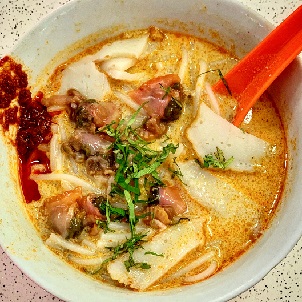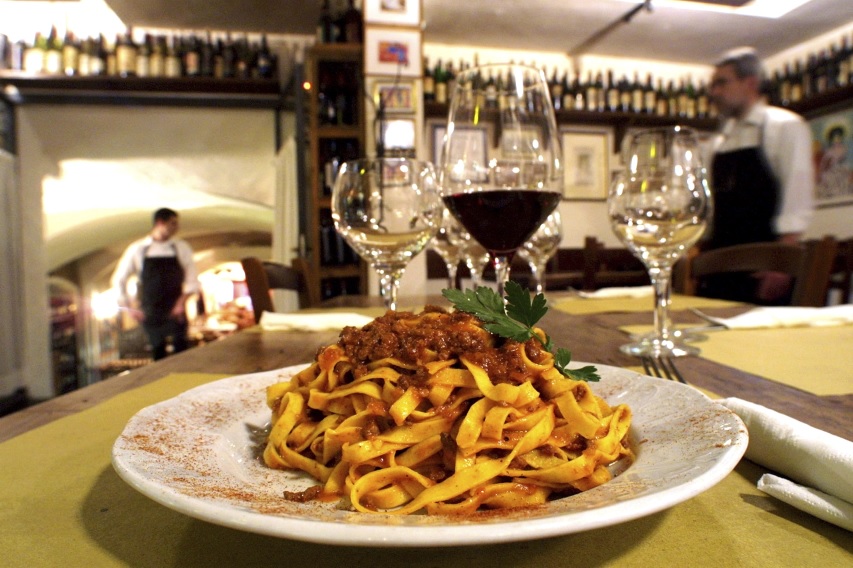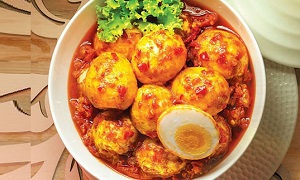Chili Con Carne vs. Goulash
Meaty Brothers from a Different Mother

Courtesy of mensjournal.com
Two meaty stews, richly flavored with the dried, ground powder of the dark red fruits of the Capsicum plant, are specific to two regions that, through parallel and convergent evolution, produced men engaged in similar lifestyles who produced recipes parallel to an uncanny degree.
Texas chili, or chili con carne (with meat), began more like a stew with chunks of meat. The ground beef and bean version came later, when an abundance of inexpensive ground beef became available everywhere. Except for the seasonings, the recipe for Hungarian goulash is almost identical to chili.
The two dishes share many other commonalities.

Courtesy of nationalcowboymuseum.org
ENVIRONMENT:
Both were perfected on the trail during long the cattle drives, by chuck wagon cooks crossing the Rio Grande Valley in Texas and gulyas or herdsman in Hungary traversing the country’s fertile highlands. The word goulash comes from the word gulyas.
The plains of Texas and Hungary, with their rich soil and abundance of grass, were perfect to raise cattle. While the herdsmen traveled to feed and sell the cattle, they would butcher the weaker cows that could not make the drive.
COOKING METHOD:
The beef was cut into cubes for a stew or soup and cooked in a cast-iron kettles over an open fire.
Gulya cooks cooked their meal in a special pot called a bogracs, a cauldron often hung from a tripod. Texans cooked chili in cast iron pots with tall legs that stood in the hot coals.
SPICES:
The cooks also gathered ingredients that grew wild along the trail to throw into the stew. Wild cumin, oregano and onions grew along the Texas trail. In Hungary, wild caraway and marjoram grew along the onions.
The Rio Grande Valley is an area where the influence of Mexican and Native American agricultural traditions were strong and the use of ground capsicum as a flavoring in food was age-old and established. Capsicum’s use in the Americas goes back for millennia, where Native Americans bred it for color, shape, size, flavor and intensity of heat.

Courtesy of asaspice.com
Before they discovered paprika, the gulyas used black pepper and salt to coat the raw meat to retard spoilage while moving the herd along the trail. When the Ottomans conquered territory in Europe and the Middle East, they cut off trade routes to India, which was their chief source of black pepper. How it got to Europe is a matter of trade and agricultural disbursal, but when paprika arrived in Hungary, it was readily accepted. The Hungarians immediately began to apply their own means of selective breeding to the plant, and bred varieties specifically for sweetness and lack of heat. The earliest Gulya cooks likely tossed the meat cubes with spicy paprika to achieve the same preservation as they did with the black pepper.
PUTTING IT TOGETHER:
The typical Hungarian recipe for goulash calls for chuck or round steak, a large chopped onion, beef stock, red wine (optional), paprika, salt, pepper, bay leaves, caraway seeds (optional), oil, water and flour.
The original recipe for Texas chili con carne calls for any kind of meat, cut in pieces about the size of a pecan; suet (so as the meat won't stick to the pot); wild onions, garlic, oregano, chiles and salt.

Hungarian Goulash / Courtesy of willcookforfriends.com
THE RESULT:
After a couple of hours of slow simmering, the meat should ideally be soft to the tooth, not firm or tough, but should still retain its integrity.
There is really little difference between American chili and central European goulash. Both are thick meat stews or soups. Both get their distinctive flavor from peppers: goulash from the mild to spicy dried paprika pepper and chili from a variety of fresh or dried chilies. And both usually include an aromatic base of sautéed onions and garlic, along with fresh or dried seasonings -- cumin being a common spice.
Category:
Recommended features by ExtremeFoodies





